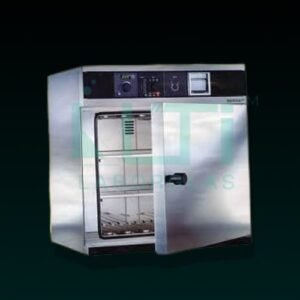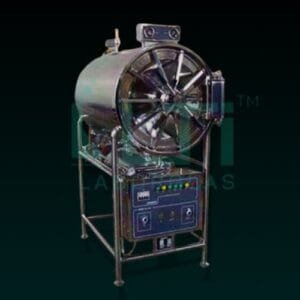Features:
- Compact and economical high performance hybridization oven
- Use for immobilization of DNA, RNA and proteins onto nylon or nitrocellulose membranes
- The oven has stainless steel interior of G.I. finished in epoxy powder coated shade
- Microprocessor temp. Controller with dual digital indicator
- Forced air circulation for temperature uniformity
- Rotary action for through mixing of hybridization and washing solutions single speed 75 RPM for rotisserie
- A class glass door permits easy viewing of the hybridization tubes without disturbing the chamber atmosphere
- Without bottles
A Hybridization Oven is specialized equipment with specific applications in molecular biology and genetics. Here’s a brief overview of its uses:
- Nucleic Acid Hybridization: Utilized for nucleic acid hybridization processes, such as DNA or RNA probe binding to target sequences.
- Southern Blotting: Applied in Southern blotting techniques for detecting specific DNA sequences.
- Northern Blotting: Used in Northern blotting methods for analyzing gene expression through RNA detection.
- Microarray Experiments: Found in microarray studies for analyzing gene expression patterns on a large scale.
- In Situ Hybridization: Employed for in situ hybridization to detect and locate specific nucleic acid sequences within cells or tissues.
- DNA and RNA Research: Integral in molecular biology laboratories for various DNA and RNA-related research applications.
- Laboratory Hybridization: Used for controlled hybridization processes in laboratory experiments and assays.
- Fluorescence In Situ Hybridization (FISH): Applied in FISH techniques for visualizing specific DNA sequences in cells.







